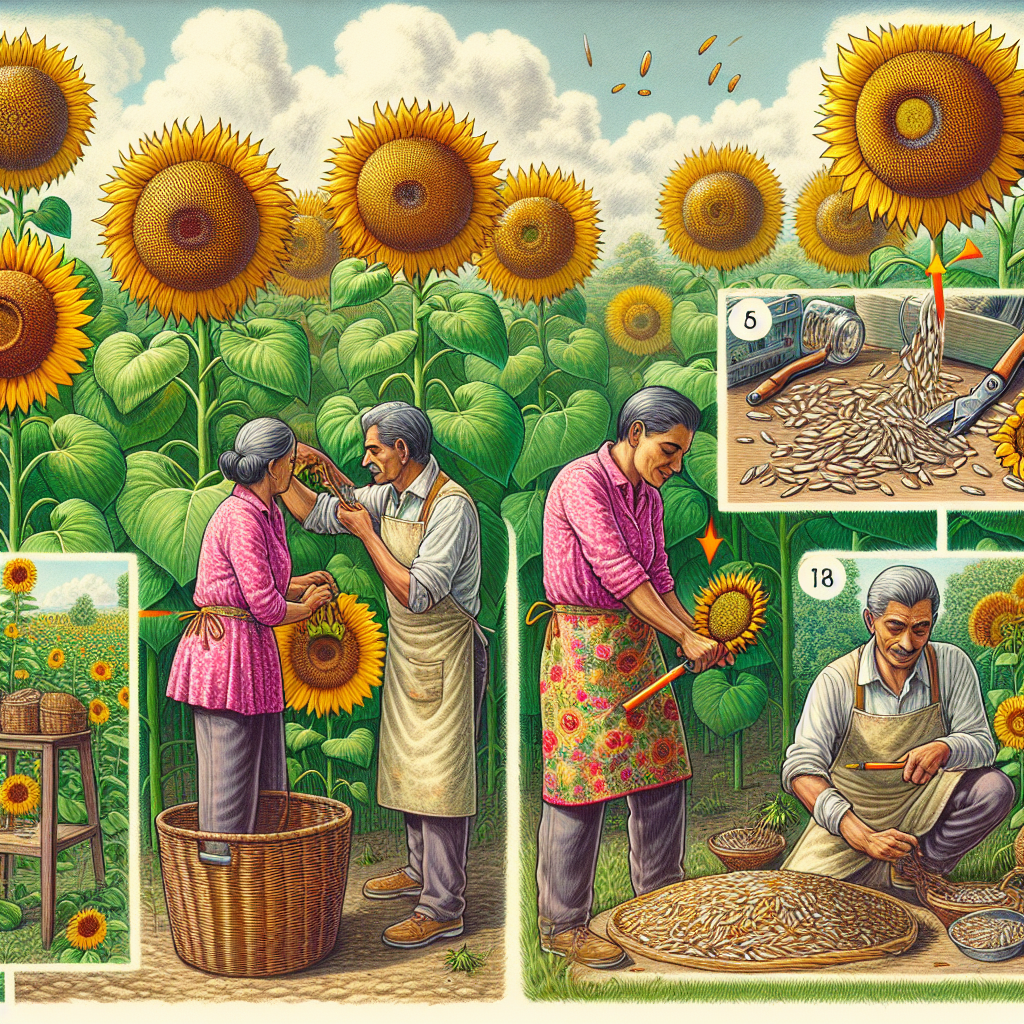
How to get seeds from sunflowers
How to Get Seeds from Sunflowers: A Comprehensive Guide
Sunflowers (Helianthus annuus) are not just one of the most cheerful flowers in the garden; they also provide a bountiful harvest of seeds that can be enjoyed by humans and wildlife alike. Whether you're looking to save seeds for next year’s planting, or you want to enjoy sunflower seeds as a healthy snack, knowing how to harvest them correctly is essential. In this article, we will cover everything you need to know about how to get seeds from sunflowers, from the timing to the harvesting techniques.
The Lifecycle of a Sunflower
Before diving into the process of harvesting sunflower seeds, it's essential to understand the lifecycle of a sunflower. Understanding this can help you know when to harvest for the best quality seeds.
- Germination: Sunflowers begin their life cycle as seeds that germinate when soil temperatures are warm enough.
- Growing: As they grow, sunflowers can reach impressive heights and are characterized by their large, sunny blooms.
- Maturation: After blooming, the plants will start to form seed heads, which are the primary sources of sunflower seeds.
When to Harvest Sunflower Seeds
The timing of your harvest is crucial to ensuring that your seeds are ripe and fully developed. Ideally, you should follow these signs to know when sunflowers are ready to be harvested:
- Drooping Petals: When the petals fall off and leave the seed head bare, it's a good sign you're close to harvest time.
- Yellowing Back: The back of the seed head will turn yellow or brown as the seeds mature.
- Seed Hardness: The seeds should feel firm to the touch; if they are still soft, they are not ready.
- Color Change: Mature seeds will often darken and develop stripes or a mottled appearance.
Preparing for Harvest
Once you've established that your sunflower heads are ready, it's time to prepare for harvesting. Here are a few steps to follow:
- Gather Equipment: Make sure you have a sharp knife or garden shears, a container for the seeds, and some protective gloves.
- Choose a Dry Day: Harvesting on a sunny, dry day can minimize mold growth and fermentation during storage.
- Wear Protective Gear: If you have allergies or are sensitive to pollen, consider wearing gloves and a mask.
Harvesting Sunflower Seeds
Now, let's dive into the actual process of harvesting the seeds. Here’s how to proceed:
- Cut the Head: Using your shears, cut the sunflower's head off the stalk, leaving a few inches of stem attached. This will give you a handle to hold it as you work.
- Remove Extra Leaves: Strip away any excess leaves from the stem and seed head to reduce moisture retention.
- Collecting Seeds: Gently rub your fingers over the seeds to remove them from the head. Alternatively, you can use a knife to scrape out the seeds.
Drying Sunflower Seeds
After harvesting, it’s essential to properly dry the seeds to prevent mold and preserve their quality. Follow these steps:
- Spread Out Seeds: Place the seeds on a clean surface in a single layer.
- Keep in a Ventilated Area: Choose a cool, dry place with good airflow to aid the drying process.
- Time: Allow the seeds to dry for about two weeks or until they are completely hard.
Storing Your Sunflower Seeds
Once your seeds are dry, they need to be stored properly to maintain their viability. Here are some tips:
- Use Airtight Containers: Store seeds in glass jars or vacuum-sealed bags to limit exposure to moisture.
- Cool and Dark Location: Find a place that is cool, dark, and dry—like a basement or a refrigerator.
- Labeling: Don't forget to label your containers with the variety and date of harvest for easy reference.
Using Sunflower Seeds
Now that you've harvested and stored your sunflower seeds, you can use them in various ways:
- Planting: If you're looking to grow sunflowers next season, you can use the harvested seeds for replanting.
- Snacking: The seeds can be roasted to create a delicious, nutritious snack.
- Baking: Incorporate seeds into bread, muffins, or other baked goods for added texture and flavor.
Conclusion
Learning how to get seeds from sunflowers is a rewarding process that connects you with nature and provides delicious rewards. With some patience and the right techniques, you can have plenty of seeds for planting or snacking. Remember to enjoy the entire process, from watching your sunflowers bloom to savoring the seeds they produce. Happy harvesting!
By Guest, Published on August 27th, 2024